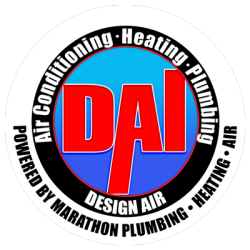Why are people talking about air cleaners these days?
Today’s energy-efficient homes much more tightly constructed than they once were, trapping dust, allergens, and other pollutants indoors. When you can’t open windows because it’s heating, cooling, or pollen season it can be 2-3 times more polluted indoors than in a typical city outdoors (https://www.epa.gov/indoor-air-quality-iaq/guide-air-cleaners-home). Air purifiers improve indoor air quality by removing particles way smaller than your regular furnace and AC air filters can (in fact, those filters are designed to protect the equipment, not you!) plus many kill germs and destroy odors.
Different Types of Air Cleaning Devices
The two major types to consider are portable room air purifiers and air purifiers that are added to your HVAC (heating, ventilation, and air conditioning) system to improve the quality of the air throughout your home. Portable air cleaners are less expensive, but tend to be noisy. Their effectiveness is limited by pollutants coming back in from nearby rooms, but they can be great for solving nearby issues such as a cigarette smoker or litter-box odors.
The various types of air cleaning devices also differ in the technologies they use. Depending on the tech and the specific design they can remove up to 95% (some even claim 99%) of airborne particles, kill bacteria and up to 90% of viruses, and reduce odors. Here are the main technologies used.
- HEPA (high-efficiency particulate air filters) designs remove ultra-fine particles such as smoke, dust, pollen, mold, and animal dander. Filter elements typically have to be replaced yearly.
- Activated carbon filters, often with special coatings or additives to improve performance can also perform as “gas-phase” filters to remove some gaseous pollutants such as from adhesives and cleaning agents as well as most odors. Their filter elements need to be changed quarterly.
- UV germicidal lights kill germs including viruses, bacteria, and fungi. In combination with internal “surface catalysts” they can also destroy gaseous pollutants including VOCs (volatile organic compounds). The UV bulbs must be replaced every few years. Unfortunately effectiveness varies tremendously with manufacturer and model. Further, some produce harmful ozone while others don’t.
- Electronic air cleaners give airborne particles an electrostatic charge (so they’re some times called ionic air purifiers) and then attracts them to an oppositely charged plate. Some models lack that plate or are poorly designed so that dust and so on makes its way through and is attracted to walls and other surfaces. Many produce ozone which is a lung irritant.
Are UV Air Purifiers Safe?
UV (ultra violet light), especially in the germicidal band, are harmful to eyes and skin so the lights should never be visible outside the unit to be safe. UV and electronic air cleaners that produce ozone can actually create an indoor air health hazard. Those that produce over 50 ppm (parts per million) are banned from sale in California.
Are Air Purifiers Really Effective Against Allergies?
Whether portable or part of your heating and cooling system, they certainly clean the air by removing far more allergens such as dust and pollen from indoor air. Many people are able to stop using over-the-counter allergy medications. But for those with severe allergies it can be a different matter.
The issue is that larger and heavier particles tend to settle out quickly and never make it to an air purifier, making them only part of the solution. You’ll certainly be enjoying cleaner and fresher air, but allergy suffers may also need to pay attention to vacuuming floors, furniture, and drapes as well as changing sheets at least once a week. Those with severe allergies may even need special HEPA vacuums.
The evidence for air cleaners reducing asthma attacks is weak, at best. Those producing ozone may actually worsen asthma and respiratory infections. As a lung irritant it can cause throat irritation and coughing that you might mistake for allergies getting worse. In high concentrations it even causes shortness of breath, chest pain, and lung damage (https://en.wikipedia.org/wiki/Air_purifier).
Design Air Can Help
You’re probably wondering about how to choose the right air cleaner. Well, it’s complicated. The right air purifiers for improving your indoor air quality depend on your particular problem and situation, including your heating and cooling system. So our clean air experts will be happy to have a look and listen, and them make some recommendations.
Family owned and operated with over 30 years experience, Design Air provides complete HVAC service, repair, and installation services. We’re also energy-efficiency experts.

